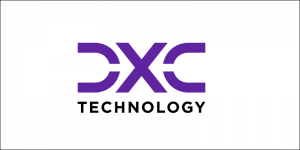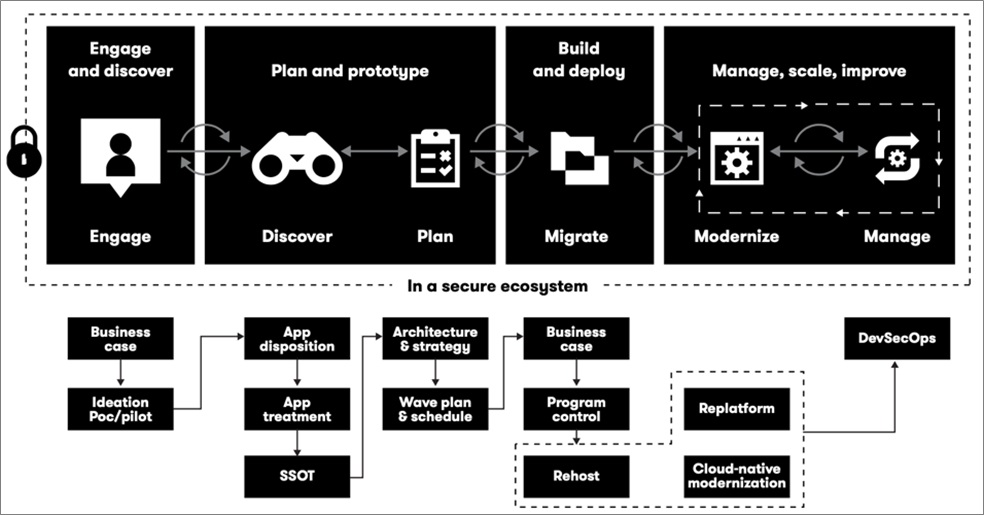AWS Partner Network (APN) Blog
IT Modernization and the DXC Data Center Exit Strategy
By Kylie Grenier, Principal Advisor at DXC
By Brandon Whichard, Offering General Manager, DXC Migration and Transformation
By Vaidy A, Sr. Partner Solutions Architect at AWS
By Thiru Sadagopan, Principal BDM at AWS
 |
| DXC Technology |
 |
As COVID-19 dramatically shifted the global economy in the spring of 2020, business and IT leaders looked for creative ways to stay connected with employees and customers while searching for new ways to deliver value and reduce costs.
Many existing corporate data center operations teams struggled to meet those competing needs overnight, and the pressure to modernize accelerated.
One of best ways to relieve the pressure of competing business needs is a focused program of IT Modernization (IT Mod). In this post, we will outline best practices for exiting a data center and discuss the pros and cons of public, hybrid, and multi-cloud operating models.
In partnership with Amazon Web Services (AWS), DXC Technology’s premier consulting advisors focus on three modernization pillars:
- Simplify and optimize IT to reduce costs.
- Modernize applications and data to gain agility and insight.
- Operate and secure hybrid cloud at scale to improve speed and reduce risk.
DXC Technology is an AWS Premier Tier Services Partner with AWS Competencies in Migration, SAP, and Internet of Things (IoT). They are also a member of the AWS Managed Service Provider (MSP) and Well-Architected Partner Programs.
DXC’s Fortune 500 customers—from aerospace and financial services to retail sales organizations—run complex, 1,000+ application estates and have accelerated their data center exit plans in the last six months.
Working with these organizations, DXC understands that software applications are the key to your business, and the smooth migration and transformation of those apps is at the heart of IT Mod.
To successfully leave the data center, you need an expert transformation team to identify and quickly clear the roadblocks common to a complex application environment.
While your team of in-house experts understands your core business and current data center operations, DXC’s core business is nimbly exiting the data center.
Developing a Comprehensive Data Center Exit Plan
Many customers begin the migration and transformation journey alone because their internal teams know the application landscape and are confident in their AWS skills. They have a strong enterprise architecture and gain early success (and some savings) transforming simple applications.
The journey begins to slow, however, as the applications become more complex, dependencies become harder to trace, and databases reside further from the applications. Middleware becomes a nightmare that APIs alone cannot solve.
At this point, the IT Mod program can lose momentum and come under scrutiny from leadership for failing to meet targets. Operations teams struggle with one foot in the data center and one foot in the cloud, so they can’t focus on continuous optimization to achieve targeted savings. The new hybrid environment may also present a complex set of security vulnerabilities because your perimeter has grown.
To prevent your data center exit program from stalling, it’s important to acknowledge you have a complex ecosystem that needs a comprehensive exit plan. AWS and DXC have a proven partnership and the expertise to develop a robust strategy that suits your business environment, and to exit successfully to meet your business goals.
How to Exit the Corporate Data Center
Most enterprise data centers host numerous applications across business and customer groups within an organization. It’s a complex environment typically comprised of multiple inter-connected server farms distributed across buildings and geographic locations.
To exit the data center successfully and fully leverage the benefits AWS offers, you need four key components, as shown in Figure 1 below:
I. Detailed application assessment.
II. Comprehensive transformation roadmap developed by business and IT advisory teams.
III. Concise plan and carefully executed pilot.
IV. Factory-based execution and managed services.
Figure 1 – An industrialized, high-speed cloud migration process.
The DXC and AWS collaboration helps the “working group” accelerate transformation by reducing risks, lowering costs, and improving capabilities and outcomes irrespective of scale or geographical location. Generally, the working group will consist of representatives from all parts of the company, such as Executive Sponsors, Business Line Managers, IT Operations, IT Engineering, Developers and Facilities Management.
Acceleration begins by incorporating a framework that includes relevant tools, design patterns, best practices, and methodologies, along with insights from industry or segment subject matter experts.
Let’s explore the four components executed by the working group in more detail.
I. Assessment
In the first phase, DXC’s IT advisors lead an assessment that provides an understanding of the current estate and desired outcome mapped by business functions and IT resources. The assessment also provides insights on the current readiness level to execute the transformation, and addresses governance and continuity requirements for operation, security, and compliance.
Iterative discovery and assessment happens throughout the lifecycle of the transformation with varying granularity of scope. Initial iteration lays the foundation for a directional business case. DXC and AWS have joint capabilities to do the discovery and mapping using combined techniques and tools.
The customer journey begins with the DXC Transformation Easy Planner (TEP) mobile app and follows with the AWS Cloud Adoption Framework (AWS CAF) including briefings, assessments, and workshops.
DXC’s artificial intelligence (AI) and machine learning (ML)-driven Modernization Studio suite of tools supports assessment of a wide range of data center environments. This includes mainframe, mid-range distributed servers, enterprise applications, and storage and networking complexities to enable rapid and automated data-driven insights.
II. Advisory
In phase two, DXC’s IT advisors—along with business advisory groups and AWS Professional Services teams—leverage the output from the assessment phase and conduct iterations at a granular level to provide a precision-guided transformation roadmap.
The advisory results: application mappings, dependencies, landing zone evaluations, treatment recommendations (drop/shop, build native, lift/shift, or 7Rs) scoped by business function along with cost information. The iterative nature of the process enables “two-way door” decision making.
The outcome is a detailed business case that creates value through cost optimization, business agility, resource optimization, and operational excellence.
III. Planning and Pilot
Using the precision-guided roadmap, the phase three planning process begins by ranking applications based on the business and technical drivers for the migration, and grouping them by their dependencies into application move groups.
DXC’s Lean Portfolio Management and Execution Squad coupled with the AWS Migration Portfolio Assessment tool consolidates move groups into a wave plan with necessary validations.
With planning complete, a migration pilot project of 10-20 applications begins. Using the expertise and delivery kits available as part of the AWS Cloud Adoption Framework, the team learns by doing and can solidify the target design, governance, risk management, compliance, cloud expertise, and operational model for large-scale migration and operation.
IV. Migrate, Modernize, and Manage
In the final phase, a factory approach accelerates the transformation. To scale factory setup, the project partnership team employs AWS Prescriptive Guidance, a methodology of time-tested strategies, guides, and patterns that accelerate workload migration by industry and segment.
Once migration and modernization are complete, DXC Bionix is used to operate, manage, and continually improve transformed workloads. Powered by data insights from analytics and AI, DXC Bionix uses lean processes with leading automation capabilities with impressive performance gains.
Figure 2 – DXC Bionix performance gains.
Understanding Cloud Operating Models
Once the data center exit is underway, customers realize they have fundamentally changed the way they manage IT and run their business. At this point, organizations must decide the best way to operate their IT environment going forward.
There are three distinct cloud operating models most companies need to consider, and they all come with tradeoffs. Typically, these tradeoffs consist of cost, flexibility, redundancy, and compliance. Each operating model has strengths and weakness to consider.
The Public Cloud model is what most people envision when they hear “cloud computing.” In this case, the end goal is to migrate all of your infrastructure and applications to AWS. Once the migration is complete, an organization eliminates nearly all IT capital costs and realizes maximum flexibility.
Organizations that embrace this model quickly provision and de-provision servers and apps as needed, providing the company with added agility. One drawback is cost, as companies that don’t implement a continuous optimization process find they’ve spun up too many servers or let servers run for too long.
Additionally, the public cloud model does not address data sovereignty issues that can lead to compliance problems. In cases where companies must keep data within the borders of a specific country or face other compliance requirements, public cloud doesn’t work.
A Hybrid Cloud model provides more options and is the first choice for most large organizations with existing data centers. In this case, some of the existing applications migrate to AWS, while other applications remain in the data center.
This model helps companies maximize their investment in their current IT environment, while giving them the ability to keep the data where needed to meet compliance requirements. The drawback is organizations still incur capital costs and need to upskill and maintain staff to operate both their data center and manage their AWS environment.
For companies that want more choice and redundancy, a Multi-Cloud model makes sense. That said, running your applications across multiple cloud providers is complex and more costly.
Most organizations struggle to optimize their cloud spend in a single environment, so adding another cloud environment is costly. Most organizations start with either the public or hybrid cloud models, and move to a multi-cloud model only if needed.
Managed Services and Continuous Optimization
Once an enterprise selects the appropriate cloud operating model, it must decide the best way to manage the new cloud computing environment. Most companies choose between hiring staff to manage everything internally, and selecting a managed services vendor like DXC.
Some enterprises start with a mixture of both, pairing internal staff with experts from a managed service provider (MSP). DXC Cloud Services for AWS provides design, delivery and daily operational support of compute, storage, and virtual network infrastructure within the AWS Cloud. DXC monitors and manages system software and infrastructure configurations, and their financial and governance services help reduce uncontrolled consumption.
For companies new to cloud computing, a next-gen AWS MSP like DXC is the right choice. Properly configuring and managing an AWS environment requires experience and expertise. As a company embraces the cloud, they need a partner to help guide them in AWS best practices and resolve outages.
Building this expertise in-house is complex and takes time and money. Hiring cloud experts is difficult in a competitive job market, and keeping everyone trained on the latest best practices is a costly, ongoing endeavor.
Justifying the use of managed services is easier than expected. DXC offers services such as continuous optimization where DXC professionals analyze your AWS environment to find cost savings opportunities. For example, identifying and removing orphaned servers and right-sizing virtual machines are two simple ways to prevent cost overruns.
By performing these optimization tasks DXC reduces operating costs and demonstrates the value managed services provides.
Conclusion
Exiting a data center is a key IT modernization strategy, and provides significant cost savings opportunity. In order to realize these savings enterprises must diligently plan their migration strategy.
As we have outlined in this post, it starts by building a plan that clearly aligns your data center exit to business goals. Understanding which applications are delivering business value, and how moving those applications to AWS will impact the business, is key to obtaining executive sponsorship for these modernization projects.
Building a plan requires you assemble a working team that represents all aspects of the business. Once the team is formed, you’re ready to perform the IT assessment, plan your migrations, and conduct pilot modernization projects to validate your strategy.
As you build your plan, you must also assess which cloud operating model fits your needs. To do this, you’ll need to understand the benefits and limitations of each of the cloud operating models including public cloud, hybrid cloud, and multi-cloud.
Data center exits are large, complex projects that require both experience and expertise. Even the largest corporations only do a few data centers a year at most. which is why it’s important to partner with DXC and AWS to provide the people and technology to help make your data center migration a success.
Find out how DXC Technology can support your immediate and long-term modernization goals. Schedule a Migration Assessment workshop with joint investments from DXC and AWS, to develop a roadmap for change.
DXC Technology – AWS Partner Spotlight
DXC Technology is an AWS Premier Tier Services Partner and MSP that understands the complexities of migrating workloads to AWS in large-scale environments, and the skills needed for success.
Contact DXC Technology | Partner Overview
*Already worked with DXC Technology? Rate the Partner
*To review an AWS Partner, you must be a customer that has worked with them directly on a project.


